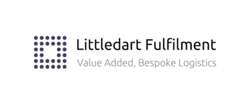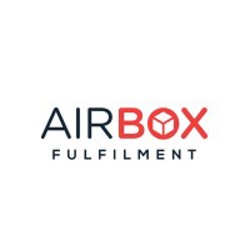WMS trusted by over 600 organisations
Integrated cloud based Warehouse Management Software
Designed to support both B2B and B2C warehousing operations - whether you’re a small scale fulfillment house, or an established multi-warehouse (or somewhere in between) – our warehouse management software is the go-to solution for ensuring business continuity. Your business can benefit from reduced costs and fewer errors, greater inventory accuracy and improved customer service.
If you’re an eCommerce retailer or a 3PL specialising in eCommerce fulfillment, learn how our Mintsoft software solutions can help you pick, pack and ship your way to success.
The leading WMS for warehouses, wholesalers and ecommerce
Whether you’re a B2B or B2C business, our software can be tailored to suit your needs. Mintsoft warehouse management software will help you pick, pack and ship your products across Ireland and beyond, with incredible accuracy.
Transform your warehouse efficiency with Mintsoft
Success Story
Delta Fulfilment are an ecommerce 3PL that support their customer brands with UK and Global order fulfillment solutions.
Their core focus is working with brands selling via their own websites and multiple e-commerce platforms; and ship 100,000 orders per month on behalf of their customers.
Mintsoft provides Delta with a system that is customisable to their requirements and enables their customers to have visibility and confidence in their operations.
If you want a system which can both manage your warehouse but also give that software to your customers, Mintsoft is great.
Dani Mechlowitz, Managing Director, Delta Fulfilment
What our customers say about our Warehouse Management System
Get more from your WMS
Get in touch with one of our ERP specialists to find out how Access Mintsoft can help in managing your organisation's unique needs.
Warehouse Management System FAQ
What is a Warehouse Management System?
A Warehouse Management System (WMS) is software designed to optimise and manage warehouse operations efficiently. It helps track inventory, control movement, and enhance order fulfillment. Designed to support both B2B and B2C warehousing operations - whether you’re a small-scale fulfilment house, or an established multi-warehouse (or somewhere in between) – our warehouse management software is the go-to solution for ensuring business continuity.
How does a Warehouse Management System work?
A WMS uses barcode scanning, RFID technology, and software algorithms to track inventory, manage storage locations, and optimise picking and packing processes for improved efficiency. This system helps manage warehouse operations effectively:
- User Access Control: Access groups determine who can perform various tasks and access specific areas within the WMS. This ensures authorised personnel handle critical functions while restricting unauthorised access.
- Inventory Management: WMS oversees inventory by tracking goods, maintaining real-time stock levels, and optimising storage. Access groups regulate who can view, edit, or modify inventory data, with warehouse supervisors having comprehensive access and staff having limited access.
- Order Management: WMS streamlines order processing, including picking, packing, and shipping. Access groups assign tasks to authorised users or groups, enhancing operational efficiency and security by preventing unauthorised access.
What is the difference between WMS & OMS?
Warehouse Management System (WMS): A software solution designed to streamline and optimise warehouse operations. Its core focus is on efficiently managing the physical aspects of a warehouse. This includes tasks such as inventory tracking, storage location management, order picking and packing optimisation, real-time stock visibility, and the efficient allocation of warehouse resources.
Order Management System (OMS): A software solution that centres on managing and optimizing the end-to-end order fulfillment process. Its primary goal is to ensure that customer orders are processed accurately and efficiently. OMS handles tasks like order capture, order processing, payment processing, inventory allocation, shipment scheduling, and customer communication.
In essence, WMS is about managing the physical aspects of the warehouse, while OMS focuses on managing the entire lifecycle of customer orders, from the moment an order is placed to its successful delivery. Both systems play critical roles in modern supply chain management, and their integration can lead to improved overall efficiency and customer satisfaction.
Who can benefit from a Warehouse Management System?
A Warehouse Management System (WMS) can benefit a wide range of businesses and organisations. Retailers and e-commerce companies can use WMS to efficiently manage inventory and ensure accurate order fulfillment. Manufacturers can streamline production processes and reduce delays by integrating inventory management with WMS. Distributors, wholesalers, and third-party logistics providers can optimise inventory control and distribution. Industries with specific compliance needs, such as food and pharmaceuticals, can maintain regulatory requirements. Healthcare facilities can improve supply chain operations, while automotive and textile businesses can enhance inventory management for various product lines. Essentially, any organisation dealing with inventory, warehousing, and order fulfillment can benefit from a WMS. It enhances operational efficiency, minimises errors, improves inventory accuracy, and ultimately leads to better customer service.
Is Your Warehouse Management System Cloud-Based?
Yes, The Access Group offers a cloud-based Warehouse Management System (WMS) solution. Our cloud-based WMS Mintsoft provides several advantages, including scalability, accessibility from anywhere with an internet connection, and automatic updates to ensure you're always using the latest features and security enhancements. This approach reduces the need for on-premises hardware and simplifies system maintenance.
Is ERP the same as WMS?
A WMS is designed to automate, optimise and improve warehouse operations, whereas Enterprise Resource Planning (ERP) is the automation of processes across all areas of a business, from human resources to procurement.
WMS can be used for both small and large warehouses but comes into its own with floors of over 20,000 square feet and the demands placed upon start to get complex. At this level and above it is sometimes referred to as an ERP system or enterprise resource planning.






